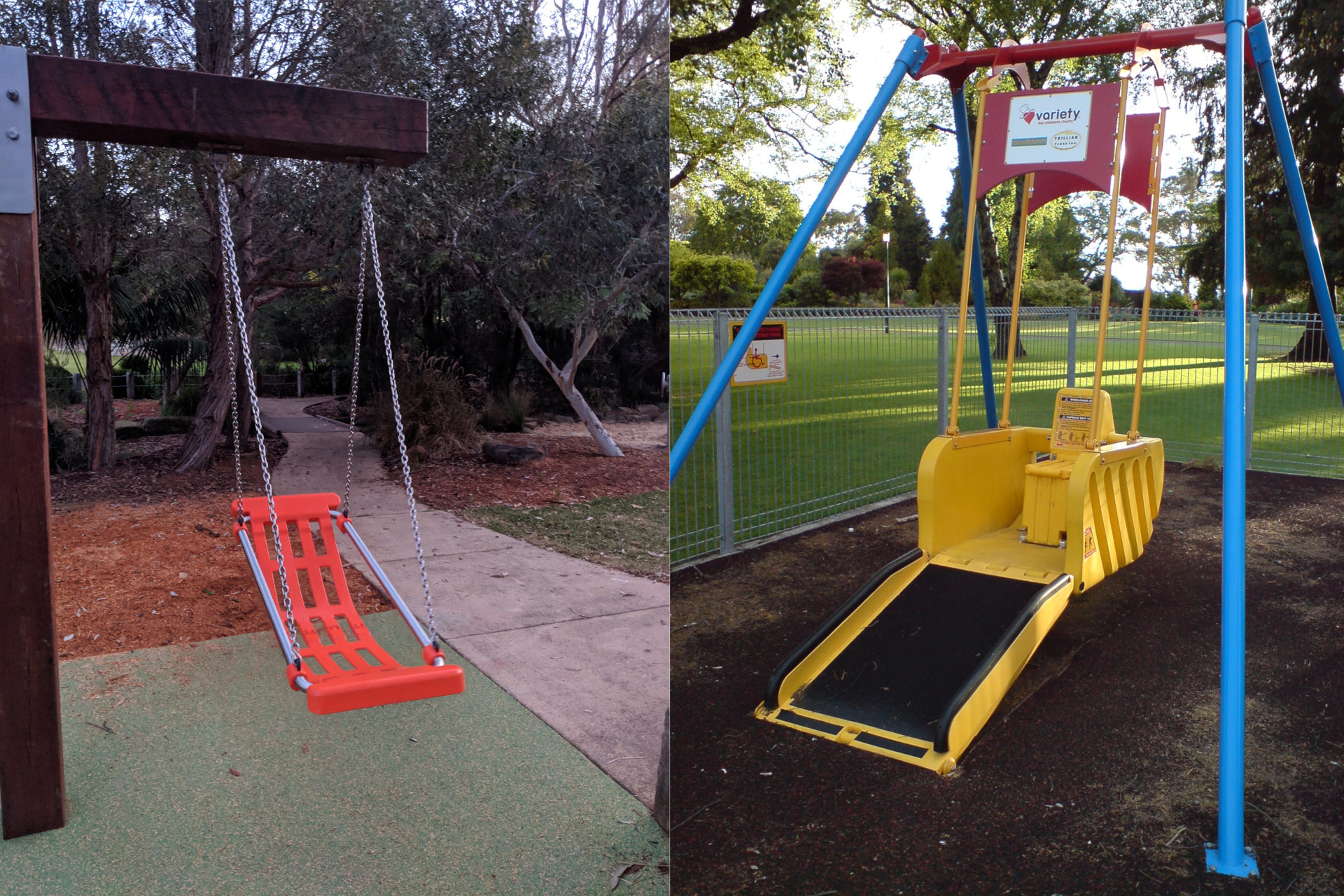Journal
Article
Designing for extreme users to fuel better solutions for everyone
It’s human nature to assume that our experiences of using something are the most common experiences, and that everyone is starting from the same place we are.

Designing for extreme users to fuel better solutions for everyone
It’s human nature to assume that our experiences of using something are the most common experiences, and that everyone is starting from the same place we are. As designers we’re trained to study the people we design for, root out problems, and invent new and innovative solutions. But for the most part our training still isn’t enough to overcome our bias towards designing for a more common experience. That means designing for accessibility is often seen as a drain on the functionality, aesthetics and value of what we’re trying to create, detracting from our fabulous solutions.
But what if we flipped the mindset to approach design differently?
I came across this swing (above left) with my two young boys in a playground recently, which sparked design joy for me. I have seen many wheelchair swings (above right), which I’m sure create a wonderful experience for children in wheelchairs, but commonly they sit dormant, gathering cobwebs because they are not user friendly for most children. The designer of this swing however, has begun their design journey with accessibility in mind and created something that is highly useable and, as my seven-year old will attest to, a novel play experience for all children.
This approach to design is useful anywhere, and it doesn’t need to be just about designing for disability. In fact, the word accessibility casts an ‘otherness’ on people who need certain features because of their limitations. It calls out us, the normal people and those who need special things in order to live. As have many before me, I prefer the idea of designing for inclusivity. But it still takes a mindset shift to consciously approach things from that perspective. The challenge is not about taking your design and making it inclusive. That creates a mental frame where you need to be reductive and eliminate elements – not really an inspiring way to work.
Instead, start by designing for an ‘extreme’ set of user needs, not the most common set of needs to create a solution for. Then find ways to make that solution desirable for the common user. Working with a more constructive approach will likely bear unexpected and surprising results.
So next time you commission or begin a design project, think about identifying those extreme users and start there – it could be vision impairment or a parent trying to manage six kids at once. Start by designing something to work for them and see where it takes you.